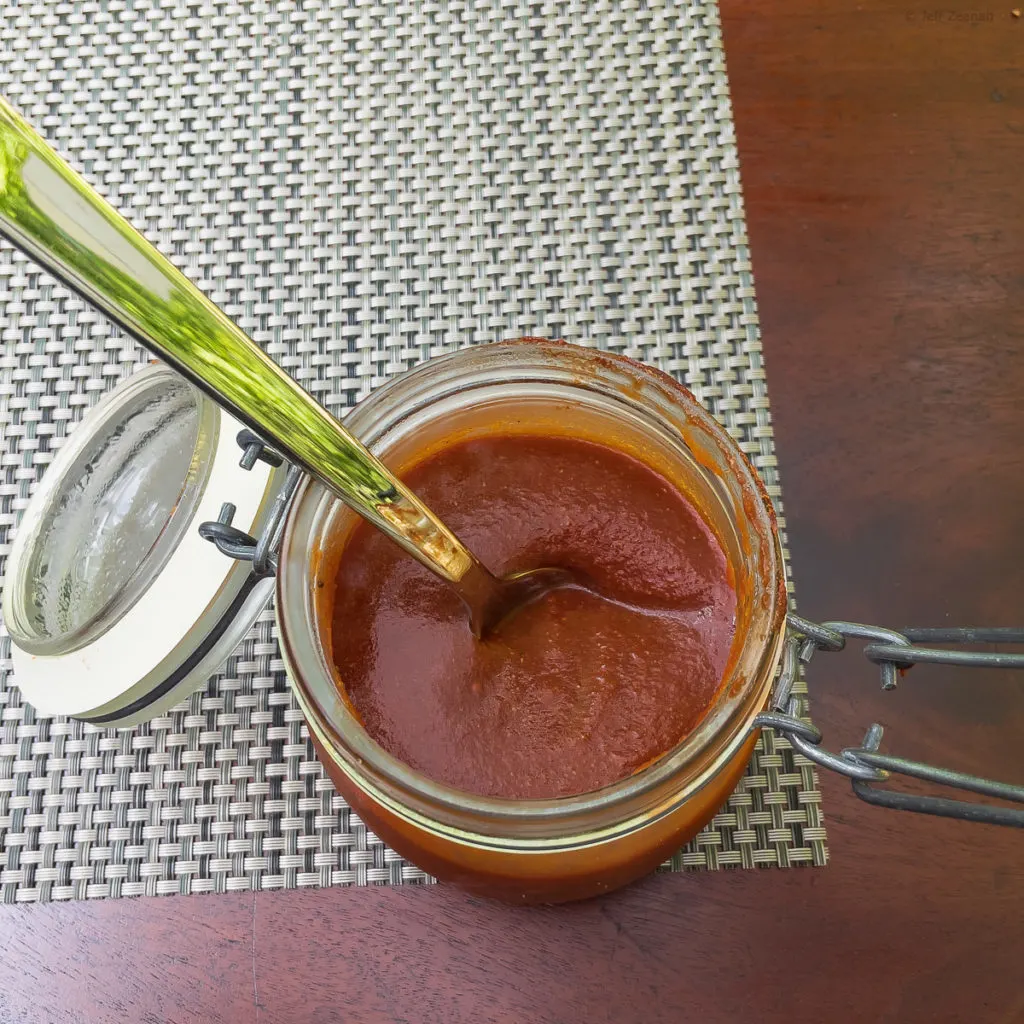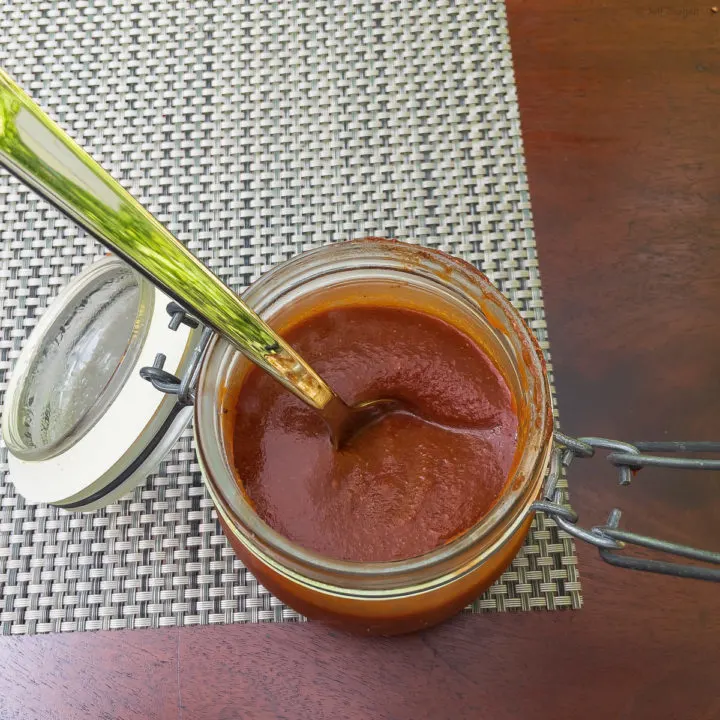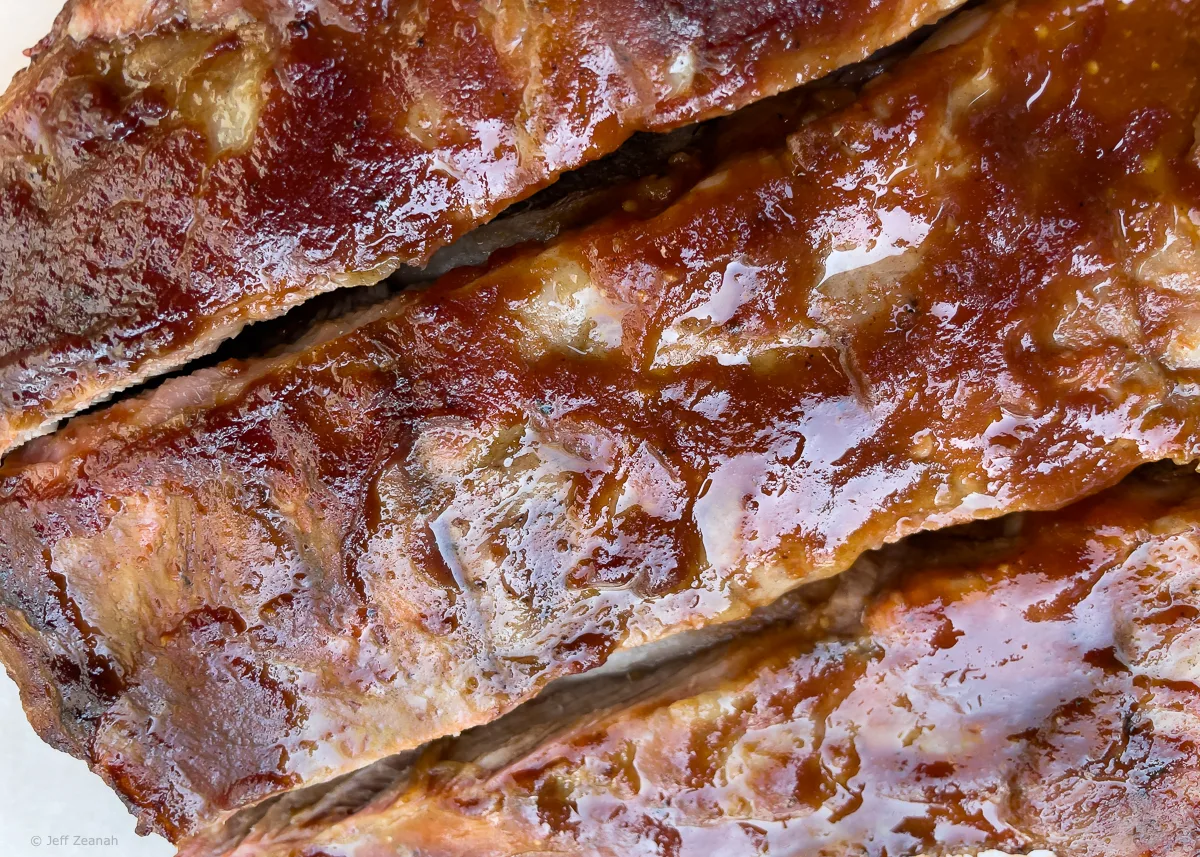Beef Brisket is what comes to mind first when thinking of Texas Barbecue. Beef, not pork. Brisket is exactly what this Texas BBQ sauce is intended for. It has several interesting taste components that complement the beef. Not as thick as my Memphis Sauce since it starts with tomato sauce and different flavorings than my Alabama Red Sauce, it is perfect for beef.

Note for the non-USA audience: the tomato sauce discussed here is canned cooked tomatoes generally salted. If starting with something labeled passata or pureed passata you will likely need to cook the tomatoes down a little extra.
This sauce is simple to make, in fact, the most difficult task is assembling the ingredients from the pantry. Other than that, it is a short simmer. One of the beauties of barbecue sauce is you can more easily personalize it by modifying any flavor you would like. Although it should be noted that the feeling often expressed is that perfectly grilled meat is the intended focus, not the sauce. Therefore, the sauce is usually not very spicy hot, and some even argue that the sauce is not needed at all. But, I am not willing to go that far.
Notes on the Ingredients
Significant Differences
Research Texas BBQ sauces and you will notice some ingredients that are not often found in other BBQ sauces. These differences often include a fat. This may be rendered fat while cooking, bacon grease, or most frequently and conveniently butter. Additionally, the commonly used apple cider vinegar is supplemented by lemon juice. This adds a nice bite to the finish.

Molasses vs. Blackstrap Molasses
Other regions generally use brown sugar to sweeten the sauce. Brown sugar is a combination of sugar and molasses. In Texas, it is straightforward they just use molasses. But predominately, the form is blackstrap molasses. A bit of explanation is in order. Molasses is made through a second boil of the sugarcane or beets, blackstrap is from the third boil. In this third boil, the sugar is burned meaning the resulting syrup is less sweet. Therefore, the blackstrap taste is a strong, pronounced flavor. While this is preferred by many, my opinion is it is a taste that seems to become more predominant with each bite. Therefore, I recommend Molasses in the recipe. Feel free to substitute blackstrap molasses if you prefer.
Related Posts

Texas BBQ Sauce
Did someone mention brisket?
Ingredients
- 15 oz can of tomato sauce
- 2 tablespoons butter
- 2 tablespoon apple cider vinegar
- 2 tablespoons lemon juice
- ¼ cup molasses
- 1 tablespoon Worcestershire sauce
- 1 teaspoon dry mustard
- ½ teaspoon granulated onion powder
- ½ teaspoon granulated garlic powder
- ½ teaspoon cumin
- ½ teaspoon Paprika
- 1 teaspoon salt
- ½ teaspoon black pepper
Instructions
- Combine all the sauce ingredients in a small saucepan, over medium-low heat. Stir to combine and bring to a low simmer.
- Simmer for 10-15 minutes. It is ready to use or store in a refrigerator. If to store, transfer immediately to a sanitized glass container. The sauce should store well refrigerated for a few days.
Nutrition Information:
Yield: 20 Serving Size: 1Amount Per Serving: Calories: 31Total Fat: 1gSaturated Fat: 1gTrans Fat: 0gUnsaturated Fat: 0gCholesterol: 3mgSodium: 234mgCarbohydrates: 5gFiber: 0gSugar: 4gProtein: 0g
Calculated Nutrition is estimated.



